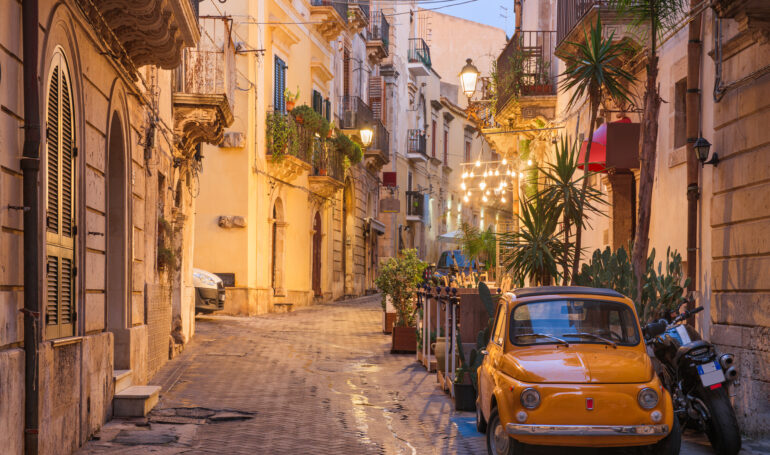
Your Guide to Visiting Eastern Sicily
I have always had a particular fondness for Eastern Sicily, and Sicily in general. Of all the Italian regions, Sicily seems the most authentic there is. I know the word authentic is a bit cliché and overused in travel, but it’s the best word to describe this region. Perhaps because I am a Southerner, having been born in neighboring Calabria, or probably because my grandmother Rosina was Sicilian, I love this region.
I always tell people that Sicily has an attitude. A “take us as we are, or don’t come at all” attitude! While other Northern regions go out of their way to welcome tourists, Sicily will welcome you with arms wide open but will not necessarily go out of its way to put up a show for visitors! It’s raw, vibrant, and pulsating with energy at every corner. What Northern Italy has in style and finesse, Sicily has in realism. And for that, I love visiting it and bringing travelers here.
Sicily is where you go when you have seen other regions in Italy and are ready to visit a different part of this great country. This post will highlight some significant attractions on the island’s eastern side, which I am most familiar with.
Are you ready to join me? Read on to learn more!
Syracuse
Syracuse (Siracusa in Italian) offers a range of attractions and activities that satisfy every taste and desire. It is the fourth most populous city in Sicily and one of the most popular with visitors. It offers a unique combination of history, culture, natural beauty, and culinary delights. Its sea enchants visitors, its history fascinates scholars, and the cuisine alone is worth the trip. This is precisely why I make Syracuse the base of our Sicilian culinary adventure. Syracuse is large enough to offer many activities and entertaining enough that visitors can quickly wander along independently and safely walk about freely. Yet it feels small and manageable even for folks who have never been to Italy or Sicily.
The city extends partly on the island of Ortygia (Ortigia in Italian, more on Ortigia below) and partly on the mainland. Because of this, Syracuse is often called “the island within the island.”
The city’s streets offer a mix of medieval atmosphere and Baroque splendor. Piazzas, lanes, palaces, everything in Syracuse seems stuck in history. With its splendid beaches, archaeological treasures, inviting open-air bars, and restaurants serving delicious Sicilian cuisine, Syracuse sums up everything that has made Sicily a world-famous destination.
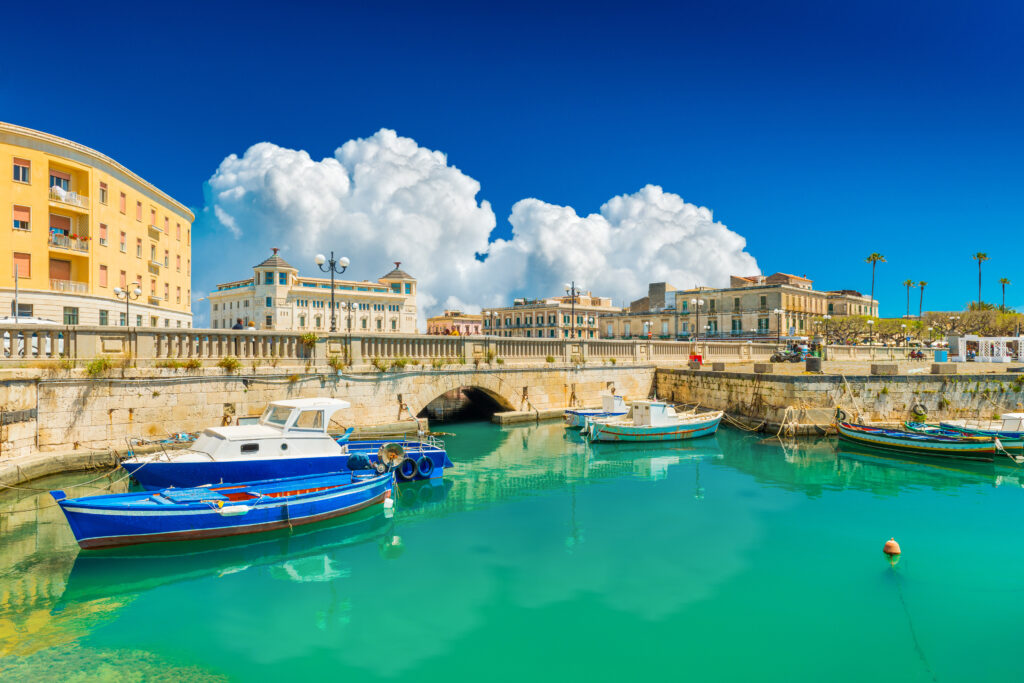
Ortigia
Ortigia represents Syracuse’s historic center and this city’s true heart. This area extends for just over a half mile and represents the oldest part of Syracuse. It is a splendid island that fascinates visitors with its timeless beauty and everlasting charm. Ortigia is connected to the mainland by Ponte Umbertino and Ponte Santa Lucia. Two very short bridges that easily connect visitors to the main city while being removed from the traffic of it all.
Ortigia is an open-air museum. Divided into small historic districts, Ortigia houses sites such as the Duomo. This church, built on an ancient Greek temple, represents a mix of architectural styles that tell the island’s complex history. Not to miss are sites such as the Swabian-Norman Castello Maniace, the Church of Santa Lucia alla Badia, and the Temple of Apollo. As well as the Temple of Athena. But the heart of Ortigia is certainly Piazza di Archimede, where you can admire the magnificent Artemis Fountain, built in 1907 by Giulio Moschetti.
Another attraction of Ortigia is the Fonte Aretusa, an oasis of tranquility located near the sea. Legend has it that the nymph Arethusa created it and transformed it into a freshwater source to escape the river god Alpheus. Today, the Fonte Aretusa is surrounded by lush vegetation and offers a picturesque spectacle, with swans swimming in its waters.
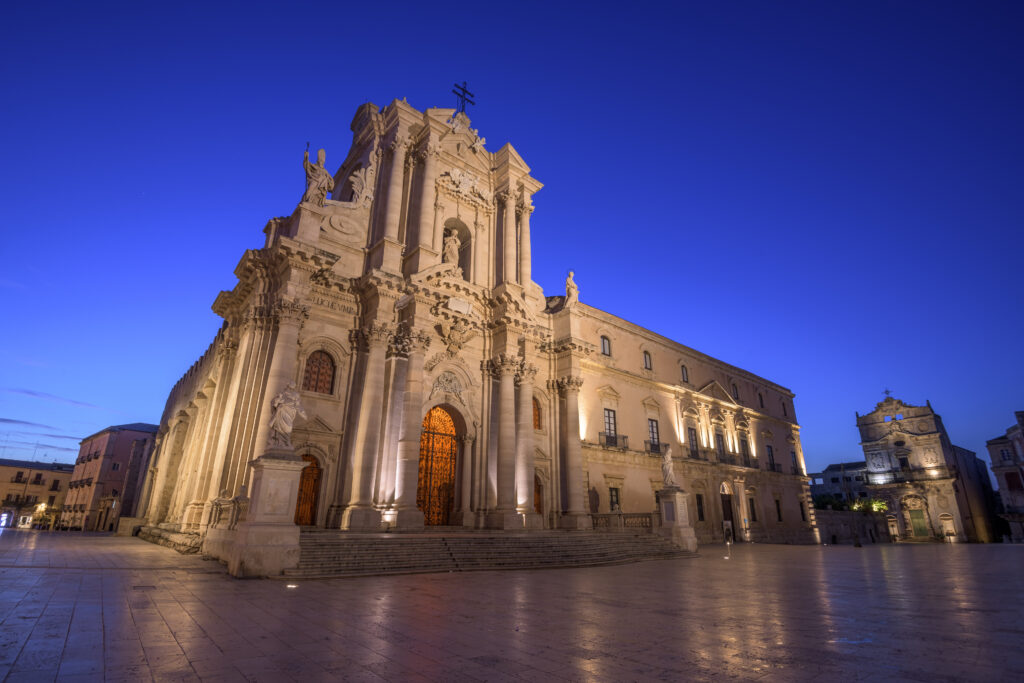
Noto
Noto is a small treasure not to be missed along Eastern Sicily. It’s no coincidence that it has been recognized by many as the capital of the Sicilian Baroque. Its beauty and elegance have made its historic center a UNESCO World Heritage Site since 2002. This Sicilian gem has very ancient origins, but the one we know today is the result of a skillful reconstruction, as a violent earthquake in 1693 destroyed the city.
The Cathedral of San Nicolò, also known as the Noto Cathedral, is the undisputed symbol of Noto and a favorite stop of mine every time I get the chance to visit this little jewel of a city. The Cathedral is a magnificent building with a sandstone facade with two towers that stand on an open space preceded by a vast and impressive staircase. The church houses essential works of art, some of which come from Noto Antica, the remains of the ancient city of Noto before the hearthquake. You will find the Palazzo Vescovile and Palazzo Landolina di Sant’Alfano on either side of the Cathedral.
Also worth visiting is the church of Santa Chiara, one of the most important examples of Sicilian Baroque architecture. Characterized by elegant decorations, it was completed in 1758 and annexed to the convent of the Benedictine Sisters, which today houses the Civic Museum of Noto. Don’t miss the panorama from the top of its terrace. It will leave you breathless, especially at sunset.
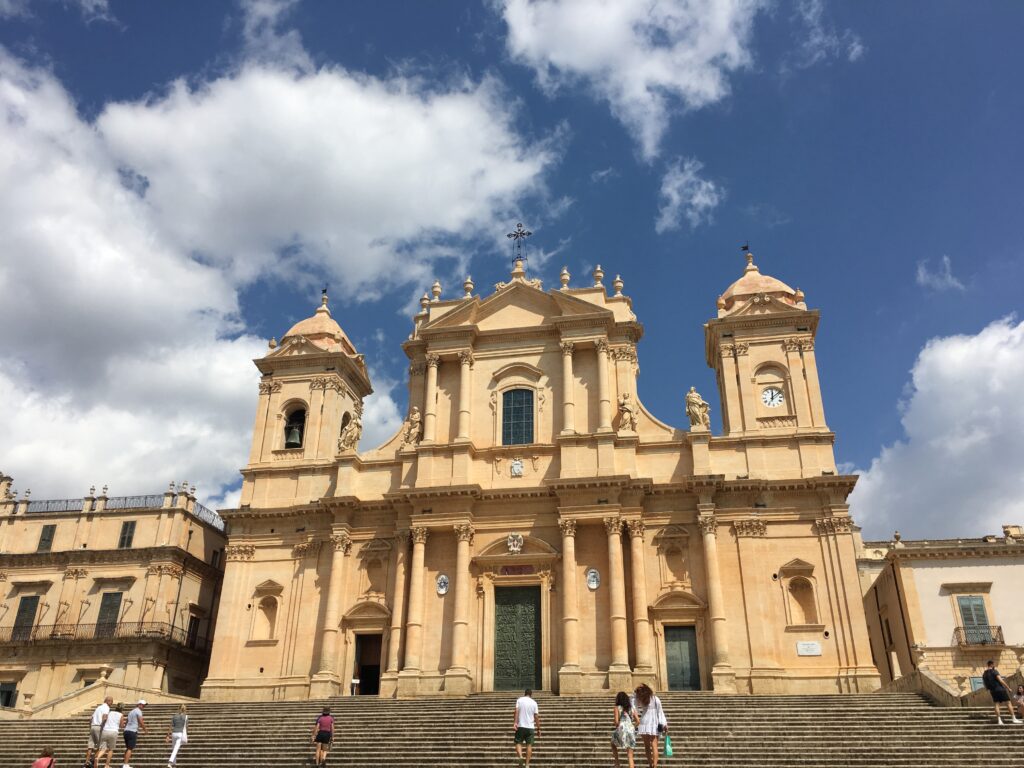
Modica
Modica is a real jewel nestled among the Val di Noto, and a Unesco World Heritage Site since 2022. With its beaches, history, cuisine, and many other novelties, it’s no wonder it is one of Sicily’s most popular holiday destinations. Like Noto, the city was reborn after the earthquake of 1693. Like all other historical cities, the best way to discover the city is to walk through its alleys. Time seems to have stopped, despite its upgrades after the earthquake.
The symbol of historical power is the Castle of the Counts of Modica. The castle towers over the city and was built on a cliff shaped like an eagle’s beak in the fourteenth century. Of course, the castle underwent significant restoration after the earthquake in 1693.
The Cathedral of San Giorgio represents one of Modica’s most famous postcard images and is another reason to visit this city. From its spectacular position at the top of a 260-step staircase, it looks out over the city of which it has become an emblem.
Of course, the specialty that makes the city famous worldwide is Modica chocolate. Modica chocolate is characterized by cold processing, which prevents the sugar from dissolving. Cinnamon, carob, jasmine, and even chili pepper enhance the flavor. When biting, you can feel the sugar’s “crunchy” consistency. I brought back several bars of Modica chocolate on my last visit, and my family tells me it’s like no chocolate they have ever had.
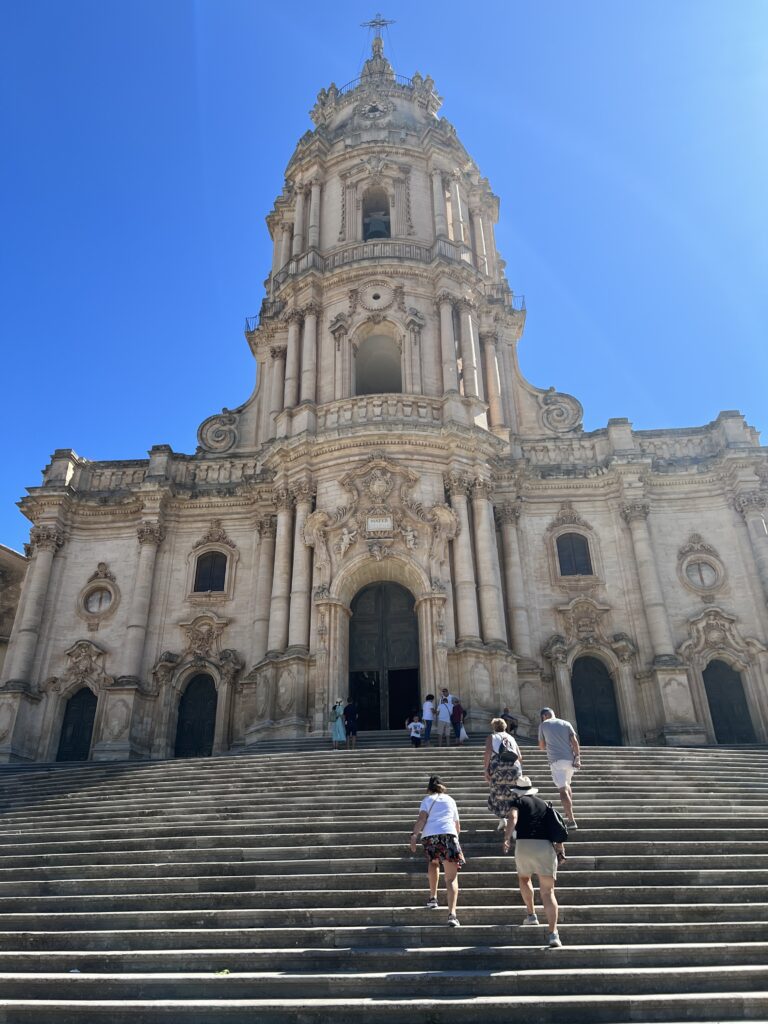
Ragusa
Ragusa is another pearl of Sicily that begs to be discovered by visitors. Yet, ironically, it is not one of Sicily’s most popular destinations. Its non-touristy aspect makes it the perfect reason to visit on your next trip! Ragusa too, suffered during the earthquake and was destroyed in the seventeenth century. Local architects completely rebuilt the city. Ragusa is unique because builders rebuilt it into two distinct parts. But the Ragusan nobles wanted to return to the original nucleus of the town. The result is a charming city divided into two separate areas, Ragusa Ibla, and Ragusa Superiore. Ragusa Ibla is the city’s oldest and most evocative part, with its narrow streets, Baroque palaces, and the majestic Cathedral of San Giorgio.
On the other hand, Ragusa Superiore is the modern part, characterized by wide streets and elegant architecture. This division creates a fascinating contrast and offers visitors a different experience depending on which part of the city they choose to explore.
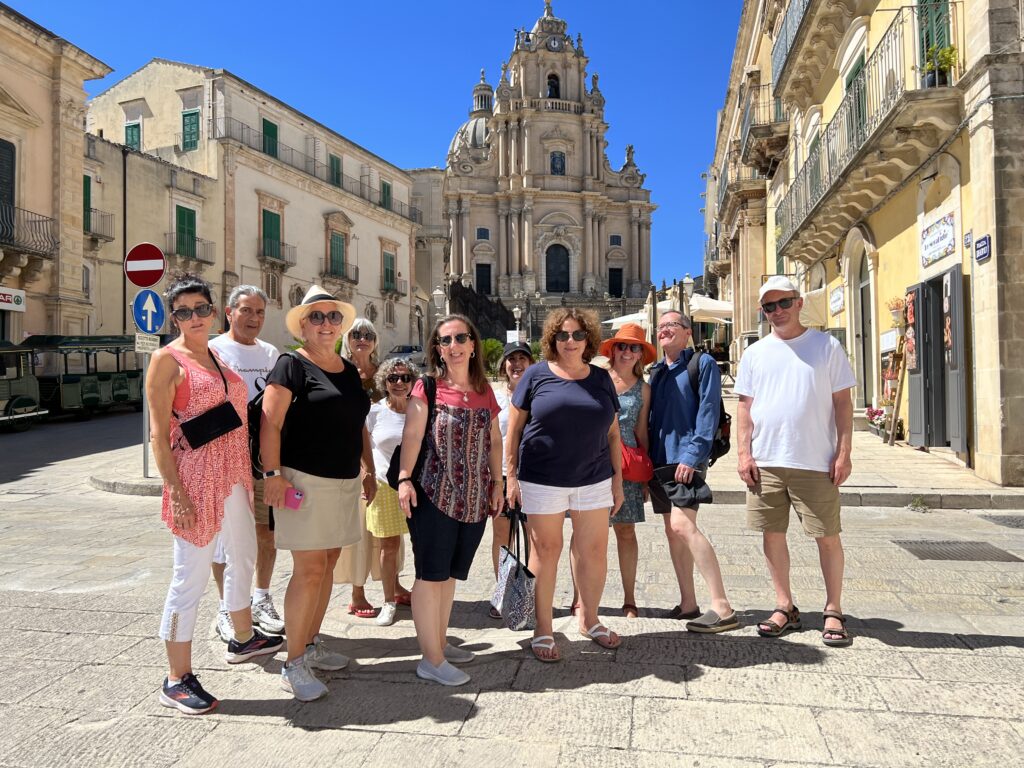
Taormina
Thanks to its enchanting position on the sea, the beautiful landscapes, and the vast historical, cultural, and archaeological heritage, Taormina is one of the most famous tourist attractions on the island of Sicily. More recently, we also have the popularity of the show, The White Lotus, to thank. A place of great charm and beauty, the splendid Sicilian town has seduced poets and writers, attracted travelers, and welcomed internationally renowned celebrities for many years.
Corso Umberto I is the main street in Taormina. Bordered to the north by Porta Messina and to the south by Porta Catania, the ancient road crosses the historic center of the beautiful Sicilian town. Characterized by a chain of shops, fashion and souvenir retailers, restaurants, and cafés, today the narrow street, named after the king of Italy, Umberto I of Savoy, is a lively pedestrian promenade where thousands of visitors from all over the world walk by every day.
In addition to being an elegant shopping street, the Corso is full of architectural and artistic testimonies from different eras. There are numerous picturesque streets that open here and there on its sides, where you can escape from the crowds if you need some refuge. On these “side streets,” you can get lost among splendid panoramas, medieval churches, and ancient ruins. The most famous monument of Taormina indeed remains the Greek Theater.
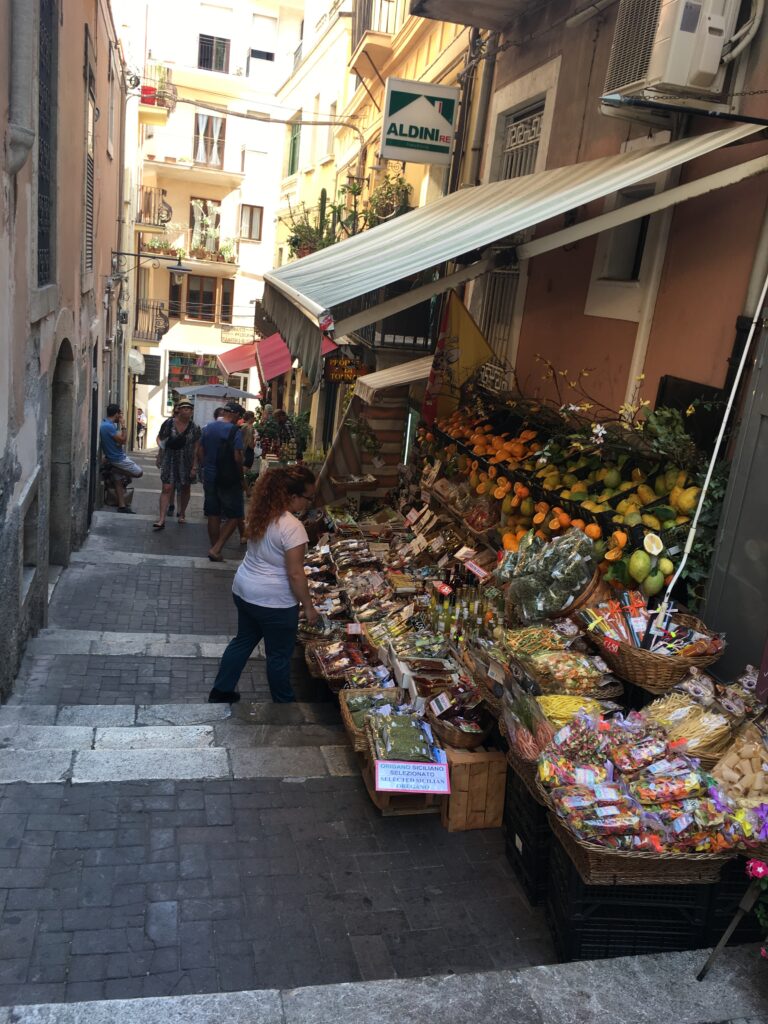
Catania
Catania, nestled between the blue waters of the Ionian Sea and the Etna volcano, is a lively, welcoming, and elegant city. The Greeks founded Catania in 729 BC. Various natural disasters, from earthquakes to volcano eruptions, have repeatedly hit the city. Locals say Catania was destroyed nine times and rebuilt nine times more beautifully than before. Among the most disastrous events that hit Catania were Etna’s eruption in 1669, and the earthquake in 1693.
You can only visit Catania by passing through Piazza Duomo, the city’s heart, whose current form dates back to the eighteenth century. In the piazza, you can admire the Cathedral of Sant’Agata, whose origin dates back to 1070. Still, its current appearance is due to the renovation in the eighteenth century, which gave it a beautiful facade in white Carrara marble created by Vaccarini. The Palazzo degli Elefanti (the Town Hall) and the famous Fontana dell’Elefante, which is made of lava stone and depicts the elephant “Liotru,” are the symbol of the city that protect Catania from volcanic eruptions.
Other buildings worth noting include the famous Ursino Castle, built by Frederick II in the first half of the thirteenth century. Today, it houses the city’s civic museum. Another ancient site in the city is the Achillian Baths which date around the 4th-5th century. They are located under Piazza del Duomo. From Piazza Duomo, you will enter Via Etnea, the main street of Catania and one of the most loved places by locals and tourists. Considered the shopping street par excellence in the city, you will find important shops and elegant Baroque-style palaces here.
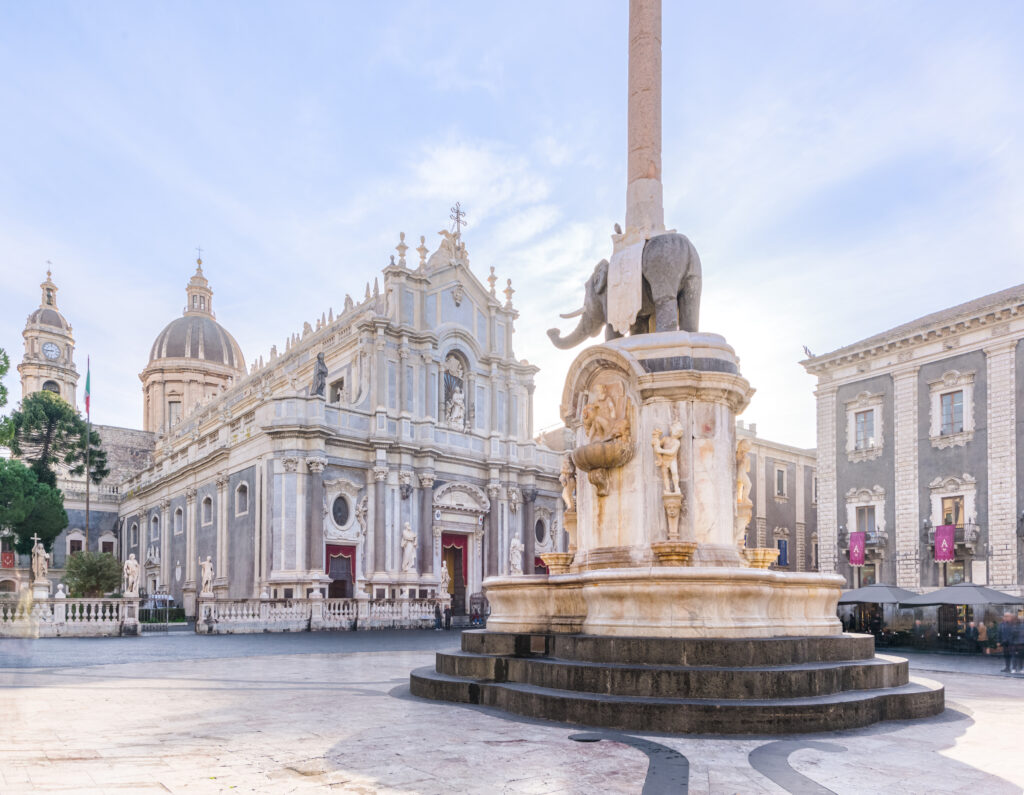
What to Eat in Sicily
Sicily offers a rich culinary tradition that combines Mediterranean, Arab, and Spanish influences. Many gastronomic specialties of Sicily are worth enjoying. Below are a few of my favorites:
Seafood: As an island, it’s no surprise that Sicily is famous for its fresh fish dishes. Among the specialties, there is pasta with sardines (pasta with anchovies, pine nuts and raisins), and swordfish alla ghiotta (swordfish with tomatoes, olives, capers, and oregano). Try also the grilled fresh tuna.
Arancini: Arancini are balls, or pyramids, of rice stuffed and fried. Common variants include:
- Arancini al ragù (stuffed with meat).
- Arancini al burro (stuffed with butter or béchamel, mozzarella, and diced cooked ham).
- Arancini with pistachio (stuffed with pistachio pesto and cheese).
Fried cauliflower: This specialty of Syracuse is also known as “poached cauliflower.” The cauliflower is first boiled and then dipped in a light batter, then fried until golden brown. It is often served with lemon sauce.
Anelletti Al Forno: Anelletti are typical Sicilian ring-shaped pasta cooked in the oven. Anelletti are usually prepared with meat sauce, eggplants, peas, and cheese. It is a delicious and hearty dish that will delight the palate.
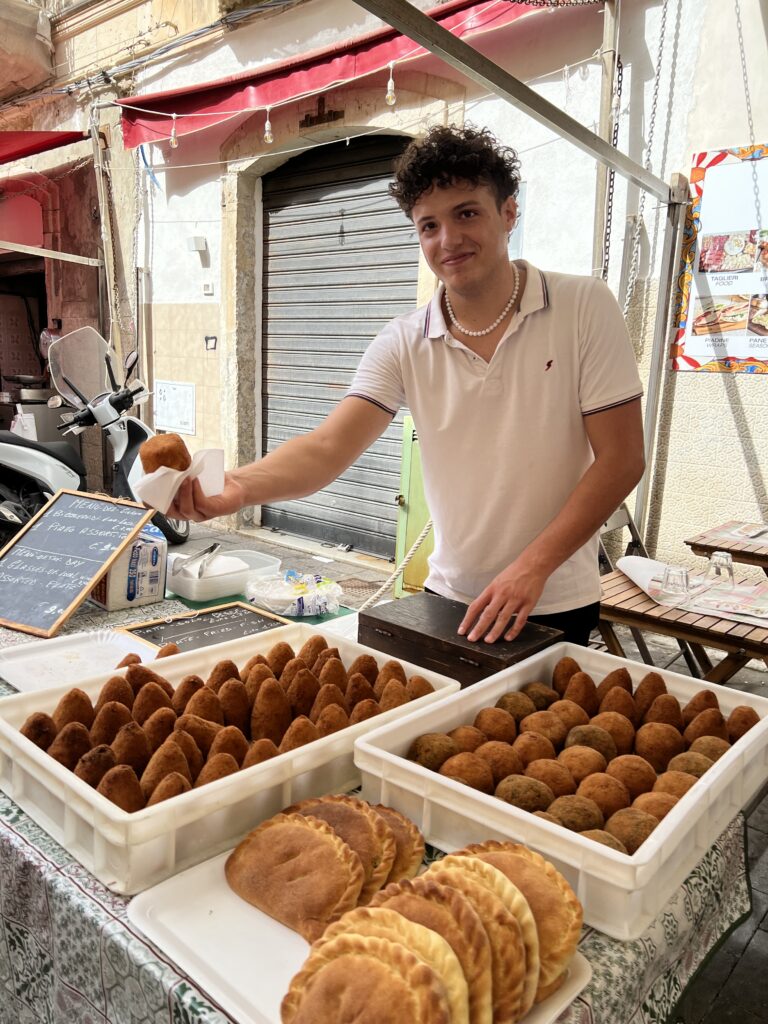
Sweets and other Goodies:
Sweets: Sicily is a mecca for sweets. If you have a sweet tooth like I do, this alone is a valid reason to visit the island! Try the Sicilian cassata (ricotta cake, candied fruit, and almond paste) or ricotta cannoli. The marzipan sweets made with almond paste are also delicious.
Citrus fruits: Sicily is renowned for its citrus fruits, especially oranges. Tarot and blood oranges are typical varieties of Sicily. They are juicy and aromatic, perfect to be enjoyed fresh or used in preparing drinks and desserts. A spremuta is freshly squeezed orange juice famous in Sicily and ideal at breakfast.
Wine: Italy, of course, is known for its quality wines, and Sicily is no exception. Here, in particular, you’ll find the famous Moscato wine of Syracuse, a sweet and aromatic wine. Other local wines, such as Nero d’Avola or Inzolia, are worth tasting!
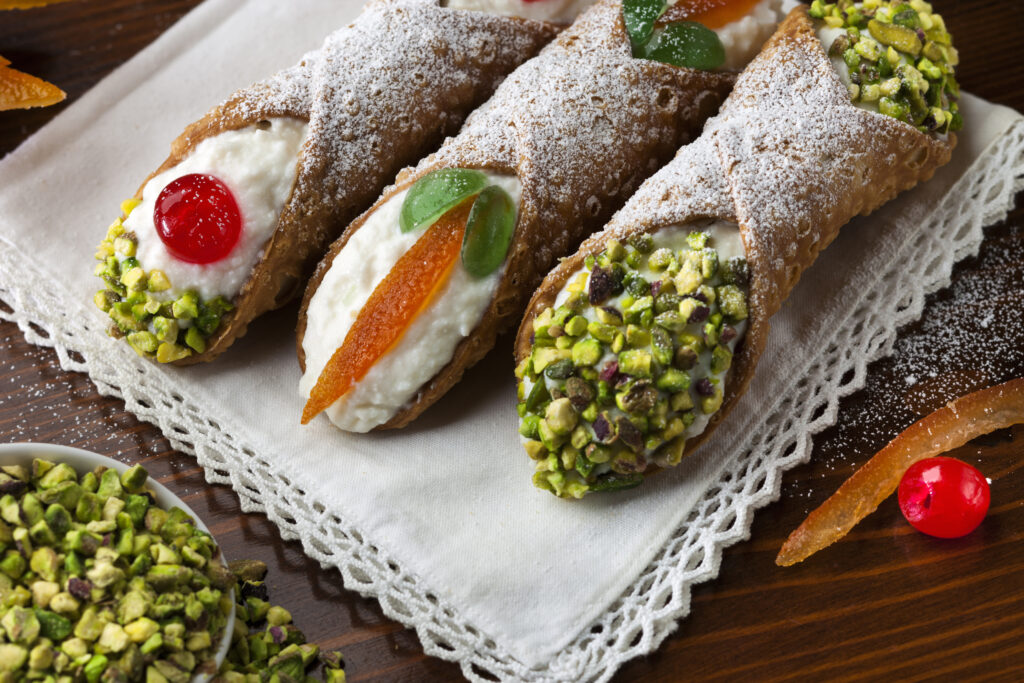
Ready to visit the island for yourself?
We’re returning for our third culinary tour of Eastern Sicily next September, 2024! Click here to get all the info.
Leave a Reply

What to Pack for Italy
Cosa Mettere in Valigia per l'Italia
Everyone is always asking me what they should pack for Italy,
so I’ve created a quick reference guide that you can use for your next trip.
Hint: You don’t need nearly as much as you think you do!

2 Comments
So enjoy your comments and writings on Sicily, our son, his wife and a friend were just there this week said it was the best food they’ve had. They were finishing up their two weeks of traveling through ending in Malta.
I have such amazingly wonderful and fond memories of traveling with you on my Italian adventure.
I highly recommend you as a tour guide
Thank you DeeDee! I loved having you with us. Your spirit and strong will is infectious! xo